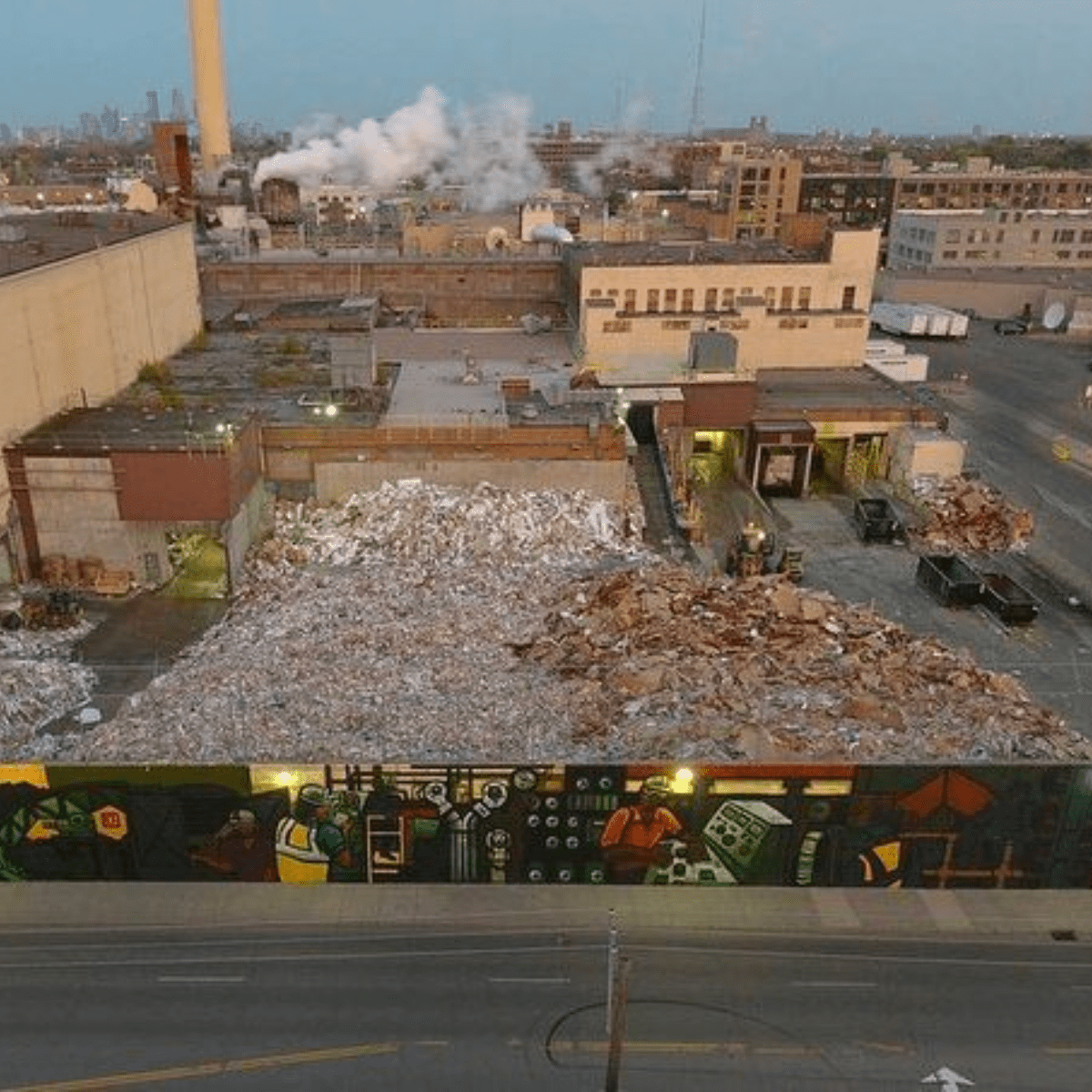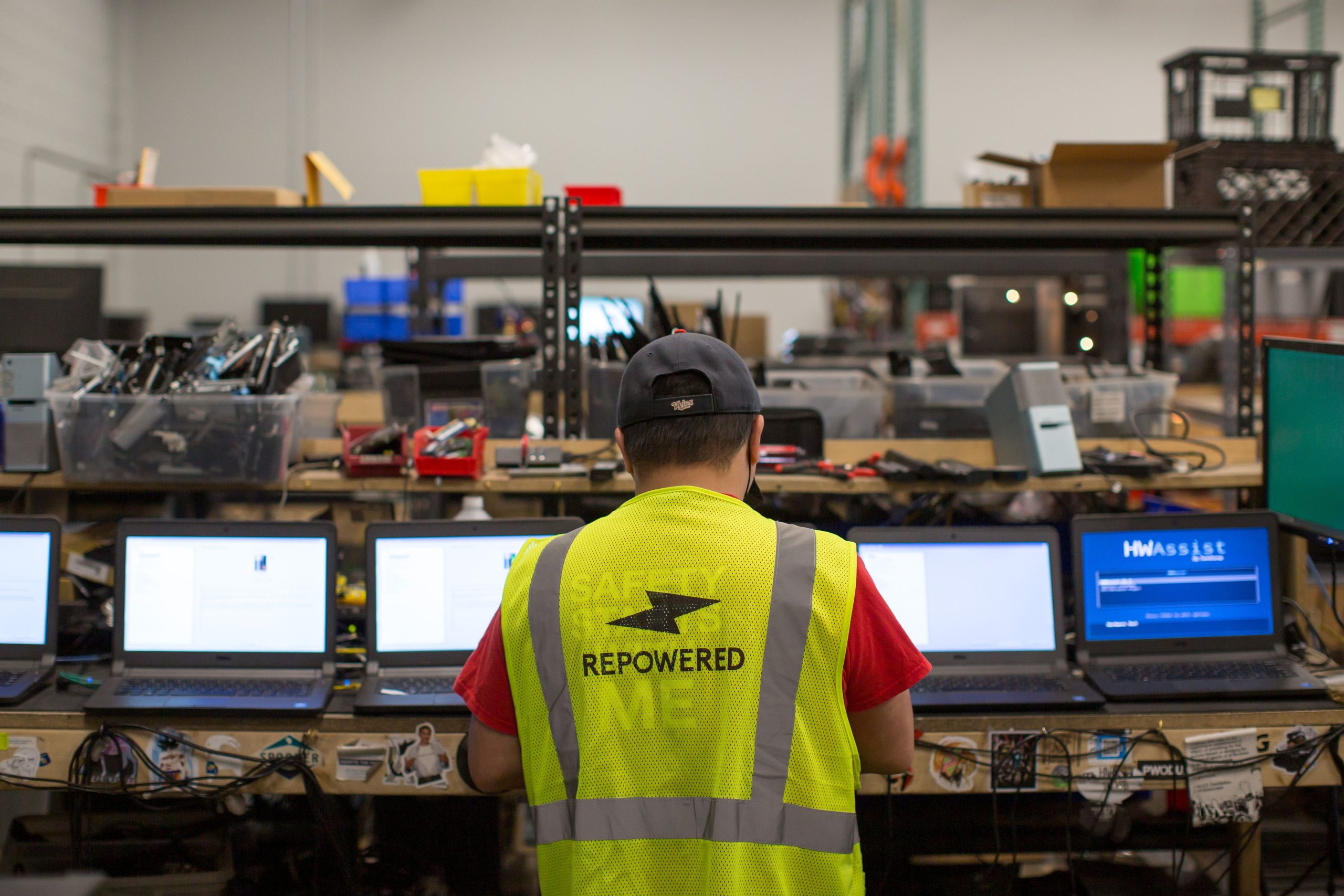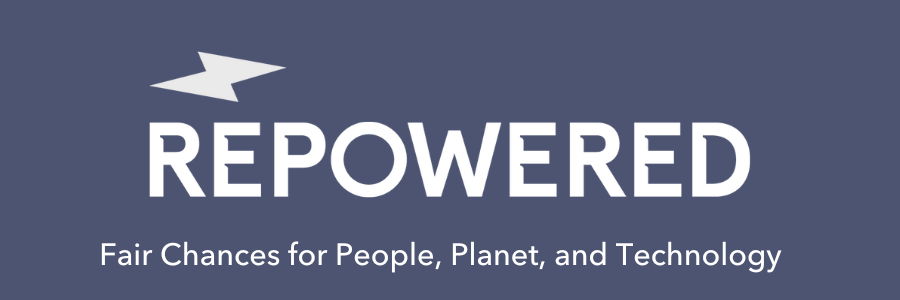
In St. Anthony Park, lots of people support recycling, so it would seem that the plethora of recycling businesses in the neighborhood would be considered a good thing.
But that isn’t always the case. Living and co-existing together as residents and recyclers is not always easy. So, is there a way to make this partnership work?
Among these businesses we have in the Bugle territory are WestRock, a paper recycling company in south St. Anthony Park. Tech Dump on Vandalia Street is a great option for electronics recycling, while Metro Metals on Doswell Avenue west of Highway 280 fills a similar role as a metal recycler.
Our neighborhood is also home to Rohn Industries on Hersey Street, a paper-recycling consolidator, and Bolander, a concrete recycler, on Capp Road. And Ramsey County waste sites take our yard waste and kitchen scraps. All of this makes St. Anthony Park what the Recycling Association of Minnesota calls home.
So what’s the problem?
While recyclers provide a beneficial service, several factors make it seem like a necessary evil both for companies and neighbors.
Just last year, for example, a large pile of scrap metal at Metro Metals sparked a fire, blowing smoke that could be seen from as far as downtown Minneapolis.
Truck traffic is another point of contention. The reality is that recyclables need to be transported and the most efficient way to do that is by truck, often traveling over concrete. With that comes increased traffic, more runoff into local waterways and more noise.
On top of that, residents complain that WestRock’s operations cause foul smells, and they are concerned about air quality. They also note that trash from the site can sometimes be seen blowing through the streets.
Recycling companies themselves also feel the negative aspects of being so close to residential neighborhoods. For recyclers, it can feel thankless to provide a necessary environmental service while hearing complaints about things that are not always in their control.
Even truck drivers have a hard time doing their job so close to a residential area. They have schedules to meet and (like most of us when we’re driving) may not think about people sleeping or working or conversing in the homes they drive past. The drivers didn’t ask the truck to be loud; they don’t think about the emissions. They have jobs to do.
What’s the solution?
If we get to know one another—residents and recyclers alike—we may be able to live in greater harmony. When community members honor the long-term benefits of recycling; and recyclers show they’re listening to their neighbors, we can restart those relationships.
First, it’s important to recognize the positive impacts of the service that recycling companies provide. In a general sense, we need them in order to reach our goals. Currently, we have a 50 percent overall recycling rate in Minnesota. And, Ramsey County hopes to boost that participation rate to 75 percent by 2030. Without our neighboring recycling facilities, seeking to reach that goal that would be much harder.
So, each recycling business has a lot to offer. Tech Dump, for example, accepts computers, printers, TVs, household appliances and gaming and entertainment systems as well as other electronics.
Michael Russelle, a member of the St. Anthony Park Community Council, pointed out the benefits of having a place nearby to bring these hazardous items and the statistics of the company seem to agree.
According to Tech Dump CEO Amanda LaGrange, her company has processed 35 million pounds of tech waste since it opened in 2011. The positive environmental impacts include less need for mining, fewer toxins in the waste stream and obviously less tech scrap products in landfills.
Meanwhile, Tech Dump has social benefits, too. For example, Tech Dump employs previously incarcerated people who struggle to find jobs. And the company recently partnered with Ramsey County to provide necessary tech items to nearly 900 county residents who lost their jobs due to COVID-19 and business shutdowns.
WestRock also plays a big role in bettering the environment. The company receives 65 percent of all recycled paper in Minnesota, taking in 1,100 to 1,200 tons of waste paper every day. It turns this into coated recycled board for items such as Kleenex boxes and cereal and pasta packaging, as well as corrugated cardboard, all of which is 100 percent recycled and recyclable.
While we can do better at appreciating our recyclers and the work they do, recyclers can also do better at appreciating residents, whose recycled products make it possible for them to be in business. They can try to be good neighbors.
Tech Dump said it is open to receiving complaints but, so far, has not received any, noting its business doesn’t create external noise or any negative environmental impacts. CEO LaGrange said she appreciates her company’s location near public transportation and a variety of businesses and people.
At WestRock, general manager Mike Gunderson is trying to better address concerns he has heard from residents. The most common question is about the smell from the recycling plant.
Gunderson acknowledges the plant yields an unpleasant smell but adds that the business operates under a permit from the Minnesota Pollution Control Agency and the smell doesn’t adversely affect air quality. WestRock also hopes to minimize the plant’s smell by using a cooling tower.
The company and residents have demonstrated they value open lines of communication. Before the pandemic, WestRock provided tours of the plant and many residents appreciated the opportunity to see the operations. The company is eager to offer these again once it is safe post-pandemic.
Steve Ray, who lives near WestRock, said he knows of many renters who would like to visit and hopes that it will be the start of noticeable change.
Can art help?
Erik Pearson, an artist who lives near WestRock, said that after looking at the plant’s blank wall on the Vandalia Street side for years, he became increasingly curious about the daily operations that go on behind it. As an artist, Pearson saw an opportunity to bring that to the outside.
After receiving a grant from the Knight Art Challenge to pursue this project, Pearson got matching grant funding from WestRock for his wall mural.
After touring the building twice and speaking with employees, in 2020 he designed and painted the mural along Vandalia Street just south of University Avenue, inspired by the history and recycling processes of the plant.
Appreciating WestRock’s efforts to support this project, Pearson believes the company understands the importance of being more connected to the community, and he hopes that his artwork illustrates that.
What’s next?
Do you have ideas for restarting the relationships between local recyclers and neighbors, while increasing recycling efforts in Minnesota?
Bring your creativity and insight to the Environment Committee of the St. Anthony Park Community Council (July 28, 7 p.m., email [email protected] for the link) or to Transition Town–All St. Anthony Park (email [email protected] for July meeting details). You just might be the person to make this world a wee bit better.
Michala Zien was an intern with TT-ASAP in spring 2021 and just graduated from the U of M in May. Previously she has been a guide at the Bell Museum, done research on water management in the Capitol Region Watershed District and focused on equitable access to water resources in Duluth and St. Cloud.
Recent News & Articles

Spotify Car Thing: What To Do Once The Device Stops Working

Second Chance Month: Why Fair Chances Are So Important

